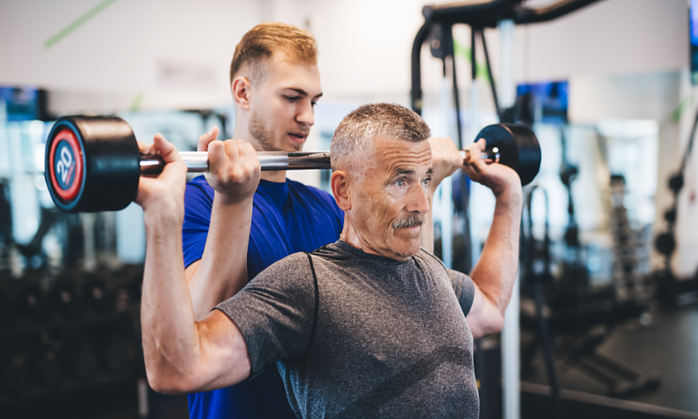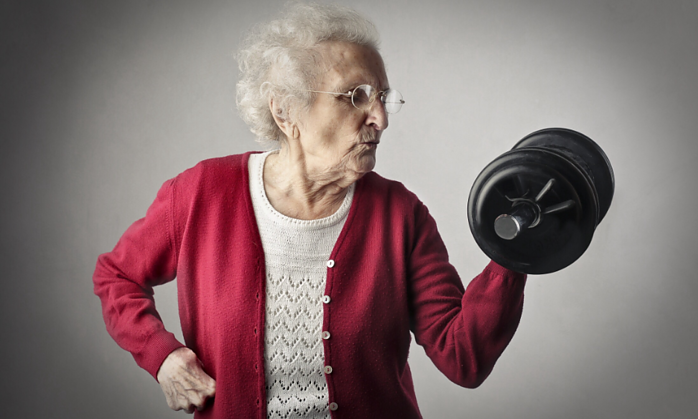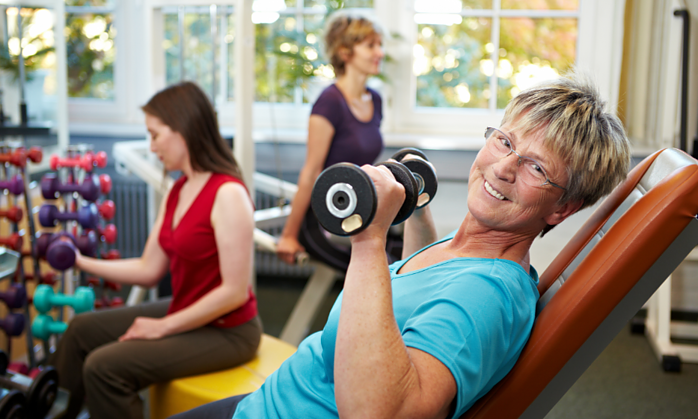I’m going to explain why focusing on muscle building after the age of 50 isn’t just a good idea, it’s crucial. As we age, our muscle mass naturally starts to decline, a process known as sarcopenia. This isn’t just about losing strength; it’s also about the integral role muscles play in your overall health and functional ability. Maintaining muscle mass as you age can be pivotal in enhancing your mobility and preserving your independence.
Now, you might be wondering how significant this muscle loss can be. Well, to give you an idea, it’s possible to lose about 3-5% of your muscle mass each decade after 30. That number can increase as you hit your 50s, which might sound daunting. But here’s the thing: muscle decline isn’t inevitable. With the right strategies, you can combat it, ensuring that your golden years are filled with activity and zest, not limitation.
In my opinion, it’s not just the outward signs of aging that we should be thinking about – it’s what’s happening inside that counts just as much. The muscles you can’t see, like your heart, can benefit from strength training too, alongside your postural muscles, which keep you upright and stable.
And let’s not forget about metabolism. Yes, muscle tissue burns more calories than fat, even at rest. By building muscle, you’re effectively turning up your body’s internal engine, which can help in managing your weight more effectively as you age.
Let’s set the stage now for what’s to come. You’re going to find out about how, despite the natural challenges that come with age, building muscle and enhancing strength is not only possible but absolutely achievable after 50. It’s time to throw the old myths out the window and embrace the new evidence. And trust me, this is where things start to get exciting.
The Real Potential: Building Muscle and Strength Post-50
I’m going to talk about something that might surprise you. You can absolutely build muscle and strength after the age of 50. While it’s true that our bodies go through biological changes as we age, these don’t have to be roadblocks. They’re just new conditions we work with.
Don’t worry too much about all the myths you’ve heard about aging being a muscle’s nemesis. The fact is, with the right strength training approaches, even older adults can see real growth in muscle size and strength. Resistance training like lifting weights, using resistance bands, or bodyweight exercises can do wonders.
Now, if you want to find real inspiration, let’s consider some case studies. You’re going to find out about people in their 60s, 70s, and even 80s who’ve taken up strength training and seen significant gains. Their stories aren’t just motivating; they’re a testament to the body’s ability to adapt and thrive at any age.
In my opinion, these examples are crucial because they bust the myth that aging spells the end for physical fitness. Building muscle isn’t just for the young; it’s for anyone who’s willing to put in the effort, regardless of their birthdate.
Embracing Strength for a Healthier Tomorrow
You’re going to find out about the sweeping health benefits of keeping your muscles strong as you age. Now, maintaining muscle mass isn’t just about looking good; it’s a cornerstone of a healthy, active older age. Strong muscles play a key role in warding off chronic diseases – think about conditions like type 2 diabetes, osteoporosis, and even heart disease. Strength training can also increase bone density.
But let’s not forget the mental health aspect. Boosting your strength can lead to enhanced self-esteem and a better mood. Plus, there’s evidence suggesting that regular strength training could help keep your mind sharp. That’s right, it may improve cognitive function, which is incredibly important as we navigate through our later years. It can lessen the risk of dementia which is a major thing in living well in later life.
If you’re wondering about the connection between muscle mass and longevity, well, I’ve got news for you. Studies suggest there’s a significant link. People with more muscle tend to live longer and healthier lives. This isn’t just about adding years to your life; it’s about adding life to your years.
Ready to up your protein intake? That’s going to be your next step, as it’s vital for muscle repair and growth, especially after 50. Protein requirements for older adults are higher than you might expect, to counteract the naturally occurring muscle loss due to aging. We’ll dive into that in the next section, where I’ll show you how to make protein a superstar in your diet.
The Role of Protein in Aging: More Than Just Muscle
In my opinion, understanding nutrition is key as you age, and protein plays a starring role—not just for bulking up. After you hit the half-century mark, your body’s protein needs shift. Here’s why: muscle maintenance is crucial, sure, but protein also aids in the repair of all tissues and the upkeep of vital bodily functions.
Don’t worry too much about the vagueness of ‘eating well.’ When it comes to specifics, your body will be asking for more high-quality protein to combat the natural loss of muscle mass—known as sarcopenia. This isn’t just about staving off frailty; it’s also about nurturing your body’s resilience against wear and tear.
Now, how much protein are we talking about? Recent studies suggest that the standard dietary recommendations may undervalue the need for protein in older adults. You’re likely going to see a figure that’s higher than what’s advised for younger folks—think about incorporating protein-rich foods into every meal to meet your body’s needs.
But here’s the catch: not all protein is created equal. Choose something that resonates with you, but also keep in mind that lean meats, fish, beans, and nuts, are typically favored for their additional health benefits. If you want to get creative with your protein intake and need ideas, I’m here to help you with that. The recommended amount of protein you need is one gram of protein for every pound of bodyweight.
You can always adjust your approach down the road, but the goal is to start recognizing protein as a friend to your health. And there’s a lot of opportunity in this dietary change—not only to boost muscle building but also to support bone health, a critical factor as you step into the next section: reducing fall risks and enhancing quality of life.
Preventing Falls and Enhancing Life Quality with Strength
Now, I’m sure you’re beginning to see the bigger picture. Gaining muscle after 50 isn’t just about looks or hitting new personal bests at the gym. It’s vitally important to your independence and well-being. Strong muscles are your best defense against falls, which is a leading cause of injury among older adults. By focusing on strength training, you can actually improve your balance and coordination, drastically reducing the likelihood of taking an unexpected tumble.
You might be wondering how exactly strength ties into balance. Here’s the scoop: when you work out, you’re not only building muscle, you’re enhancing your joint stability and reaction time. This means if you do stumble, your body is better equipped to correct itself and prevent a fall. It’s these subtle yet crucial improvements that can mean the difference between a close call and a call to emergency services.
I’ve spoken with folks who’ve seen their lives transformed through regular strength training. One individual swapped their fear of stepping out for a daily walk into enthusiasm for local hiking trails. Another found the confidence to play with their grandkids at the park, without the constant worry of getting hurt. These stories highlight that the impact of strength on quality of life can’t be overstated. It’s about reclaiming your confidence and the joy in everyday activities.
So, if you’re over 50 and worried that it’s too late to start making these changes—don’t be. Your body is capable of remarkable adaptability, and the benefits you’ll reap go far beyond the physical. A stronger physique paves the way for a more active, enjoyable, and independent life. You might just be surprised at what you can achieve with a little effort and the right approach. I would recommend weight training as the best way to start your fitness journey. Choose something that resonates with you, start slow, and watch as your world opens up with every step you take.
Hey, great article. It’s good to know that we can continue to build and maintain muscle as we get older, both for health reasons and to offset the injuries related to falls and other common occurrences as we age. It is comforting that we can take our health into our own hands no matter the age, and it will continue paying us dividends throughout life.